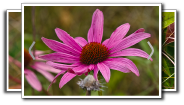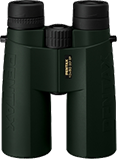northern flatid planthopper
(Flatormenis proxima)
Conservation • Description • Habitat • Ecology • Distribution • Taxonomy
|
|
||||||||||||||
Description |
Northern flatid planthopper is a common, small, jumping insect. It occurs in the United States east of the Great Plains. It also occurs in southern Quebec and Ontario Canada, and in Mexico, Central America, and South America. It is probably the most abundant flatid planthopper (family Flatidae) in the eastern U.S. Adults are active from June to October. They feed on a wide variety of woody and semi-woody species including American hophornbeam, black oak, broad-leaved dock, common hibiscus, common milkweed, common pawpaw, grape, oak, Osage orange, red mulberry, and slippery elm. They are also known to feed on a variety of ornamental and agricultural plants. Adults are more or less wedge shaped and 3⁄16″ to ⅜″ (5.5 to 9.0 mm) in length. The body color is green, but the wings and body are moderately to densely covered with a mealy, white, waxy powder. The upper part of the front of the head (frons) is wider than tall, and it is not strongly extended forward. The forewings are elongate triangular. They are held parallel to the body, almost vertically, when at rest. The upper outer corner of the wing is relatively squared, not broadly rounded. There are two submarginal veins paralleling the wing margin. Numerous crossveins between the marginal vein (costa) and the first submarginal vein, and between the first and second submarginal veins, define two rows of small cells, at least near the wingtip. The fourth segment (tibia) of each hind leg has comb-like spines at the tip and spines on the sides. The last part of the leg (tarsus), corresponding to a foot, has three segments. There are two spines on the second tarsal segment. |
Size |
Total length: 3⁄16″ to ⅜″ (5.5 to 9.0 mm) |
Similar Species |
Habitat |
|
Ecology |
Season |
June to October |
Behavior |
|
Life Cycle |
|
Nymph Food |
|
Adult Food |
A wide variety of woody and semi-woody species and a variety of ornamental and agricultural plants. |
Distribution |
||
|
Sources |
|
| 3/8/2025 | ||
Occurrence |
||
Common |
||
Taxonomy |
|
Order |
Hemiptera (True bugs, Hoppers, Aphids, and Allies) |
Suborder |
Auchenorrhyncha (true hoppers) |
Infraorder |
Fulgoromorpha (planthoppers) |
Superfamily |
Fulgoroidea |
Family |
Flatidae |
Subfamily |
Flatinae |
Tribe |
Nephesini |
Genus |
Flatormenis |
Subordinate Taxa |
|
|
|
Synonyms |
|
Anormenis chloris Anormenis proxima Anormenis septentrionalis Flatormenis chloris Ormenis chloris Ormenis proxima Poeciloptera proxima |
|
Common Names |
|
mealy flatid planthopper northern flatid planthopper |
|
Glossary
Costa
On ferns: The central axis of a pinna, to which pinnules are attached. On mosses: the central axis (midvein) of a leaf. On insects: The vein on the leading edge of the forewing.
Frons
The upper front part of an insect’s face, roughly corresponding to the forehead.
Tarsus
On insects, the last two to five subdivisions of the leg, attached to the tibia; the foot. On spiders, the last segment of the leg. Plural: tarsi.
Tibia
The fourth segment of an insect leg, after the femur and before the tarsus (foot). The fifth segment of a spider leg or palp. Plural: tibiae.
Visitor Photos |
||
Share your photo of this insect. |
||
This button not working for you? |
||
Alfredo Colon |
 |
MinnesotaSeasons.com Photos |
||
|
||
|
||

Slideshows |
|

Visitor Videos |
||
Share your video of this insect. |
||
This button not working for you? |
||
|
Other Videos |
||
Northern Flatid Planthopper 3 |
About
Sep 19, 2024 Profile of a Northern Flatid Planthopper. |

|
Created: 3/8/2025 Last Updated: © MinnesotaSeasons.com. All rights reserved. |


